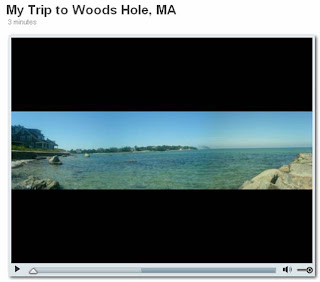The first result should be a link to showtimes at the local cinemas. The results will have a link to the movie trailer, more information from IMDb (the Internet Movie Database), and the Google map of the theater location.

Literature searching tips and educational insights
The first result should be a link to showtimes at the local cinemas. The results will have a link to the movie trailer, more information from IMDb (the Internet Movie Database), and the Google map of the theater location.

Eigenfactor is a free tool developed by Carl Bergstrom's lab at the University of Washington. It measures the impact of a journal based on the number of citations as well as journal pricing. They describe themselves as:
(1)
Read a more scholarly description of the Eigenfactor at http://scholarlykitchen.sspnet.org/2008/07/23/eigenfactor/




 Recently while on vacation, my hand and arm got quite swollen and inflamed from two bug bites. A friend suggested a family folk remedy of placing crushed garlic under a bandage directly on the swollen areas to excise the toxins from the bites. Since icing it and taking antihistamines for a day wasn't doing much, I agreed to the suggestion. I blame my lack of judgment on the 97 degree Southwestern desert heat and the pain and heat from the swelling. Within the first half hour, I felt a burning sensation where the garlic was and assumed it must be working. However, after almost three hours, things didn't seem quite right when my hand became even more inflamed.
Recently while on vacation, my hand and arm got quite swollen and inflamed from two bug bites. A friend suggested a family folk remedy of placing crushed garlic under a bandage directly on the swollen areas to excise the toxins from the bites. Since icing it and taking antihistamines for a day wasn't doing much, I agreed to the suggestion. I blame my lack of judgment on the 97 degree Southwestern desert heat and the pain and heat from the swelling. Within the first half hour, I felt a burning sensation where the garlic was and assumed it must be working. However, after almost three hours, things didn't seem quite right when my hand became even more inflamed.
Well, long story short, I suffered minor second-degree "garlic burns" on the two sites where the compress were. Symptoms included blistering, heat, and redness. The doctors prescribed oral antibiotics for the possibly infected bites and a topical antibiotic (bactroban cream) for the cellulitis. When I finally got hold of a computer, I ran a quick PubMed search and found that there have only been a few cases of garlic burns reported in the medical literature. The first was reported in 1987.
PowerPoint for Teachers- PowerPoint Presentations: Design, Content, & Delivery
Death by PowerPoint (and how to fight it)
For some additional tips on how to give effective presentations, check out the Business Week article, The 10 Worst Presentation Habits.
Impliment at least three of anything you learned in these resources above and you're guaranteed to have a happier audience that is bound to be wowed by your ideas!
THE HEART - so vital to our existance, so profound, so...hard to remember all the boatloads of information related to the heart! Well, thank goodness for tutorials such as the ones created by Blaufuss Multimedia Laboratories.
